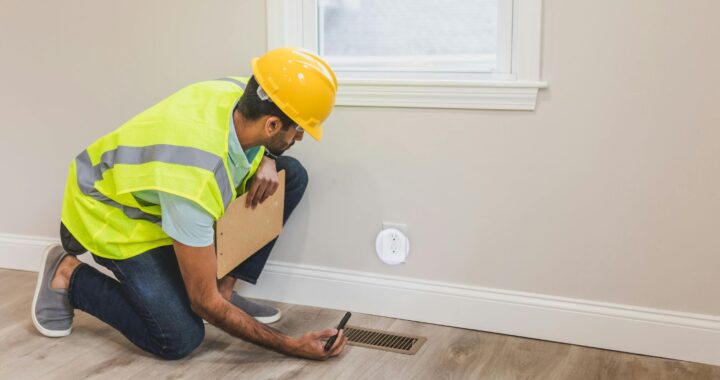How to Improve Indoor Air Quality for a Healthier Home

Indoor air quality plays a crucial role in our health and well-being, yet it remains largely invisible until problems surface. According to the Environmental Protection Agency, the air inside our homes can be two to five times more polluted than what we breathe outdoors. This statistic becomes particularly concerning when we consider that most people spend roughly 90% of their time indoors. Whether you live in a spacious suburban house or a compact urban apartment, maintaining clean air is essential for everyone. From cooking residue and cleaning products to pet dander and outdoor pollutants that find their way inside, our homes harbor numerous sources of contamination that affect the air we breathe daily.
Understanding Indoor Air Pollutants
Indoor air pollutants exist in various forms, each potentially compromising our health in different ways. Particulate matter—including dust, pollen, and pet dander—floats invisibly around us. Biological pollutants like mold spores and bacteria thrive in damp environments. Meanwhile, volatile organic compounds (VOCs) silently off-gas from paints, furniture, and cleaning supplies. Even routine activities such as cooking dinner, wiping down countertops, or lighting scented candles release compounds that can degrade air quality.
The health consequences of breathing poor-quality air range from minor irritations to serious medical conditions. The World Health Organization has established clear links between indoor air pollution and respiratory infections, worsened asthma symptoms, and even cardiovascular disease. Vulnerable populations—particularly children, the elderly, and those with existing respiratory conditions—face heightened risks from these invisible threats.
Simple Habits to Reduce Indoor Air Pollution
You can dramatically improve your indoor air quality by incorporating these straightforward practices into your routine:
- Ventilate regularly by throwing open windows for just 5-10 minutes daily, even during colder months
- Run exhaust fans while cooking or showering to draw moisture and pollutants outside
- Avoid indoor smoking entirely—tobacco smoke contains thousands of harmful chemicals that linger in your environment
- Opt for low-VOC or natural cleaning products whenever possible
Key Takeaway: Small, consistent actions make a big difference. Dusting with a damp cloth rather than dry dusting, removing shoes at the entrance, and quickly addressing water leaks can prevent many indoor air problems before they take hold.
The Role of Ventilation and Filtration
Ventilation introduces fresh air into your living space, while filtration removes unwanted particles from the air already circulating inside. Though opening windows provides natural airflow, this approach isn’t always practical—especially in areas with high outdoor pollution, during extreme weather, or for allergy sufferers when pollen counts soar.

HEPA (High-Efficiency Particulate Air) filters stand out for their ability to capture 99.97% of particles as small as 0.3 microns—including most common allergens, dust particles, and some bacteria. For gaseous pollutants and odors that HEPA filters miss, activated carbon filters provide complementary protection through adsorption. According to the American Society of Heating, Refrigerating and Air-Conditioning Engineers (ASHRAE), homes should maintain at least 0.35 air changes per hour to support healthy indoor air quality.
Integrating Air Cleaning Solutions
Several practical approaches can help purify your indoor environment. Start with regular replacement of HVAC filters according to manufacturer guidelines—typically every 1-3 months. For targeted protection, a portable air purifier can capture fine particles and allergens in bedrooms, living rooms, or other frequently used spaces. Nature lovers might appreciate that certain houseplants like peace lilies and spider plants can contribute modestly to air quality improvement, though their impact remains smaller than mechanical filtration systems.
When evaluating air cleaning options, look beyond marketing claims to third-party certifications, and consider both upfront costs and ongoing maintenance requirements before making your decision.
Special Considerations for Sensitive Groups
Those living with asthma, allergies, or other respiratory conditions need to be particularly vigilant about indoor air quality. Prioritize bedrooms when implementing improvements, since we spend approximately one-third of our lives sleeping. The impact can be substantial—one family reported a remarkable decrease in their child’s nighttime asthma symptoms after implementing a comprehensive approach that included regular deep cleaning, allergen-proof bedding covers, and enhanced ventilation throughout their home.
Maintaining Healthy Air Year-Round
Develop a seasonal maintenance routine to ensure consistent air quality throughout the year:
- Spring: Inspect for mold growth that may have developed during damp winter months
- Summer: Monitor humidity levels, aiming for the ideal range of 30-50%
- Fall: Clean heating systems and vents before their first use of the season
- Winter: Combat reduced natural ventilation with appropriate filtration strategies
Pro Tip: Enter filter replacement dates and seasonal maintenance tasks into your calendar with reminders to ensure these important air quality measures don’t slip through the cracks.
Conclusion
Creating and maintaining healthy indoor air requires ongoing attention and effort, but the benefits to your family’s health and comfort are immeasurable. By identifying pollution sources in your home and implementing targeted strategies to address them, you can create a living environment that supports wellness for years to come. Begin with just one or two changes today, then gradually build a comprehensive approach tailored to your specific home layout, local climate, and family needs.


 Signs You Need Professional Plumbing Services Immediately
Signs You Need Professional Plumbing Services Immediately  Repair Heating System: Fast and Effective Solutions for Your Home
Repair Heating System: Fast and Effective Solutions for Your Home  How to Find Good Local Builders For Home Repairs
How to Find Good Local Builders For Home Repairs